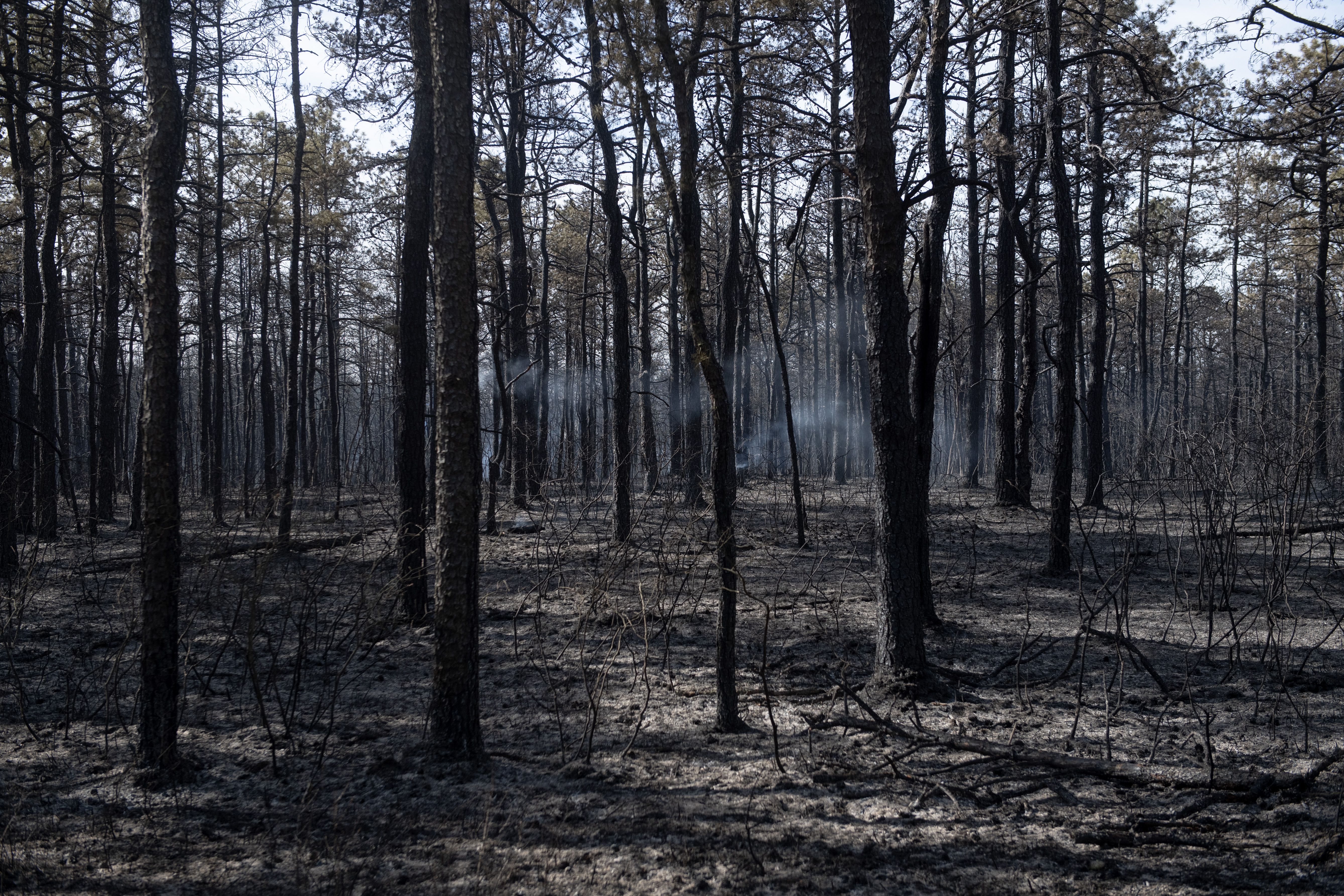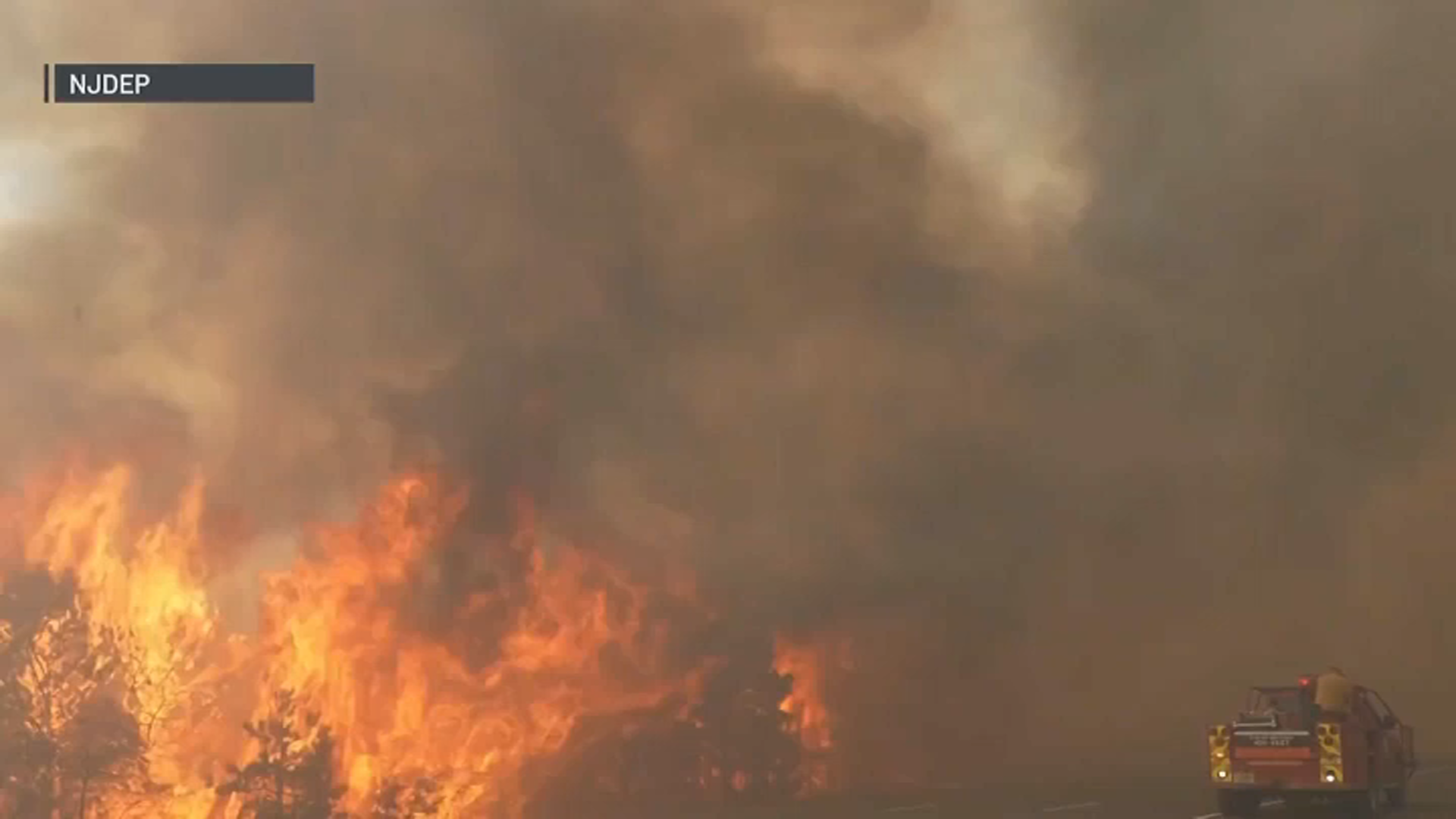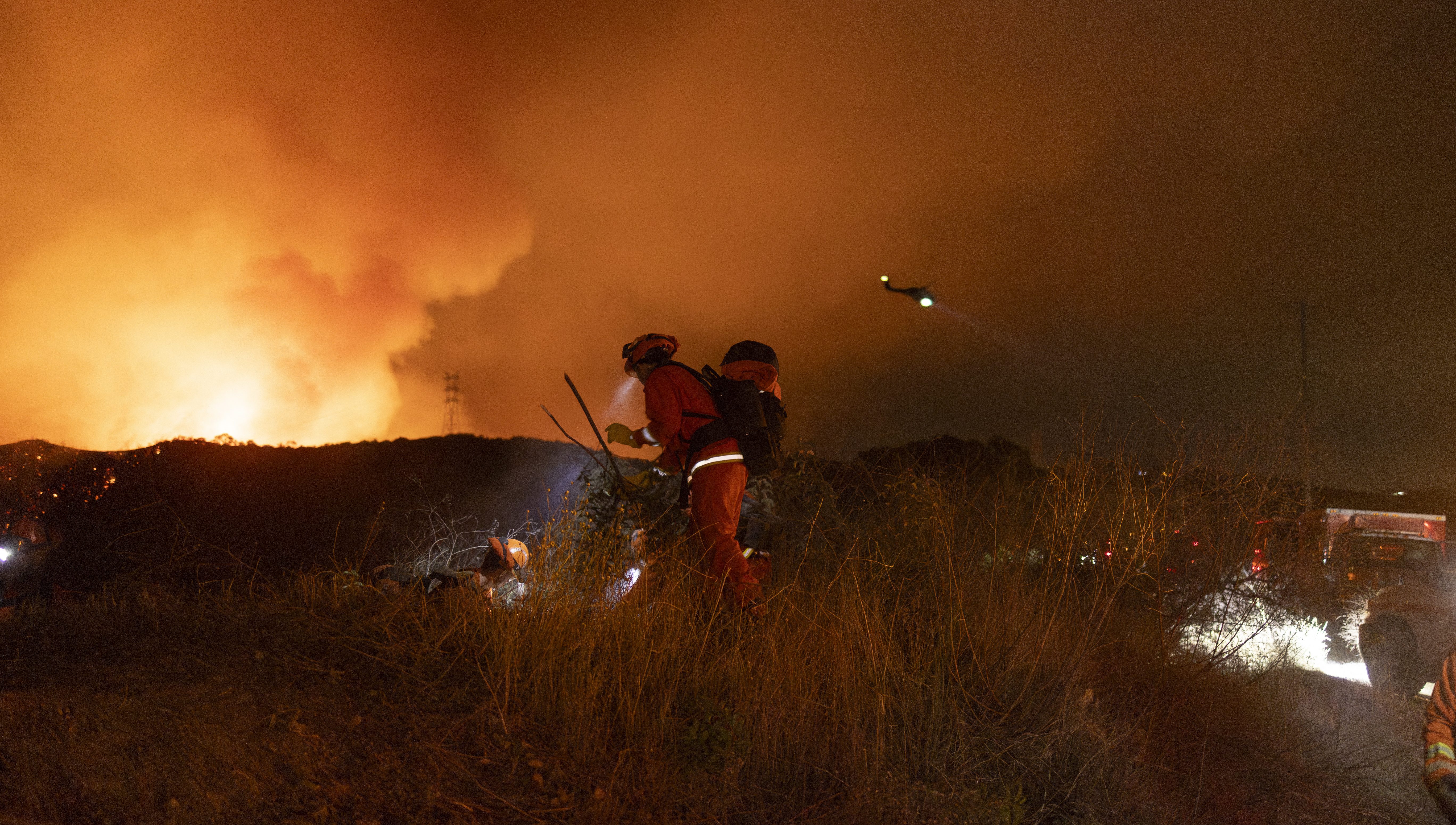New Jersey Wildfires: Health Alert & Air Quality Concerns
NJ Wildfires Trigger Air Quality Alert: Is Your Health at Risk?
Introduction: Smoke Signals and Sneezes
Oh, New Jersey. The Garden State, known for its bustling cities, beautiful beaches, and… well, sometimes, unexpected wildfires. Right now, those fires are sending smoke signals – signals of potential health risks carried on the wind. It seems the Jones Road wildfire down in Ocean County is proving to be a real problem. The smoke is spreading, and that's got health officials worried. Are you ready to find out what this means for you and your loved ones? Let's dive in!
The Jones Road Wildfire: A Burning Concern
The Jones Road wildfire might sound like a small, localized incident, but it's anything but. This fire is churning out a significant amount of smoke, which is impacting air quality in areas downwind. It's like when you're grilling, but instead of a delicious burger, it's a landscape going up in flames, and that smoke is heading your way. We need to understand the scale of this and what areas are most affected.
Where is the Smoke Heading?
The wind is playing a crucial role here. As the wind direction shifts, the smoke plume could eventually spread over the city and through the Hudson Valley. Think of it like a river of smoke, meandering its way across the landscape. This is a dynamic situation, meaning the areas affected could change day by day, even hour by hour. Stay informed!
Air Quality Action Day: What Does It Mean for You?
The New Jersey Department of Environmental Protection (NJDEP) has issued an Air Quality Action Day. This isn't just a suggestion; it's a warning. It means the air quality has reached a level that's considered "unhealthy for sensitive groups." But who are these "sensitive groups," and what should they do?
Who is Considered "Sensitive"?
When they say "sensitive," they're talking about:
- People with heart or lung disease (including asthma)
- The elderly
- Children
- Individuals who are pregnant
These groups are more vulnerable to the harmful effects of air pollution. Think of it like this: their bodies are like finely tuned engines, and the smoke is throwing a wrench in the works.
What Precautions Should You Take?
The NJDEP is urging these sensitive individuals to limit time outside and avoid strenuous activities. That doesn't mean you have to become a hermit, but it does mean being smart about your choices. Think of it as scaling back your outdoor activities to protect your health.
- Limit time outdoors: Stay inside as much as possible, especially during peak smoke hours.
- Avoid strenuous activities: Skip the marathon training and heavy gardening for now.
- Keep windows closed: Seal your home to prevent smoke from entering.
- Use an air purifier: If you have one, now is the time to crank it up.
- Stay informed: Monitor air quality reports and heed official warnings.
Particulate Matter (PM2.5): The Culprit Behind the Crisis
The Air Quality Action Day specifically mentions Particulate Matter (PM2.5). What exactly is that? PM2.5 refers to tiny particles in the air that are 2.5 micrometers in diameter or smaller. To put that in perspective, it's about 30 times smaller than the width of a human hair! These particles are so small that they can easily be inhaled deep into the lungs and even enter the bloodstream.
Why is PM2.5 So Dangerous?
These tiny particles can cause a range of health problems, including:
- Respiratory irritation (coughing, wheezing, shortness of breath)
- Aggravation of asthma and other lung diseases
- Heart problems
- Increased risk of respiratory infections
Long-term exposure to PM2.5 has even been linked to more serious health issues, like cancer. It's not something to take lightly.
Understanding the Air Quality Index (AQI)
The Air Quality Index (AQI) is a tool used to measure and report air quality. It ranges from 0 to 500, with higher numbers indicating worse air quality.
AQI Levels and Their Meanings
Here's a quick breakdown of the AQI levels:
- 0-50: Good - Air quality is satisfactory, and air pollution poses little or no risk.
- 51-100: Moderate - Air quality is acceptable; however, for some pollutants, there may be a moderate health concern for a very small number of people who are unusually sensitive to air pollution.
- 101-150: Unhealthy for Sensitive Groups - Members of sensitive groups may experience health effects. The general public is not likely to be affected.
- 151-200: Unhealthy - Everyone may begin to experience health effects; members of sensitive groups may experience more serious effects.
- 201-300: Very Unhealthy - Health alert: Everyone may experience more serious health effects.
- 301-500: Hazardous - Health warning of emergency conditions: The entire population is more likely to be affected.
When the AQI is "unhealthy for sensitive groups," it's time to take precautions.
Protecting Your Home from Smoke Infiltration
Keeping the smoke out of your home is crucial during an air quality alert. Here are some practical tips:
Sealing Cracks and Crevices
Even small gaps around windows and doors can let smoke in. Use weather stripping or caulk to seal these openings. Think of your home as a submarine; you want to keep the bad stuff out!
Air Purifiers: Your Indoor Allies
Air purifiers with HEPA filters are highly effective at removing PM2.5 from the air. Choose a purifier that's appropriately sized for the room you're trying to clean. Running it 24/7 during the air quality alert can make a big difference. It's like having a tiny air cleaning superhero in your home.
DIY Air Purifier: The Box Fan Method
If you don't have a commercial air purifier, you can create a DIY version using a box fan and a furnace filter. Secure the filter to the fan with tape, making sure the airflow is directed correctly. While not as effective as a HEPA filter purifier, it can still help reduce particle levels. It's the MacGyver solution to air pollution!
Driving During an Air Quality Alert
Driving can expose you to higher levels of air pollution. Here's how to minimize your risk:
Recirculate Your Car's Air
Set your car's ventilation system to recirculate air. This will prevent outside air (and smoke) from entering the cabin. It's like creating a mini-bubble of cleaner air inside your car.
Close Windows and Vents
Make sure all windows and vents are closed tightly to minimize smoke infiltration.
Beyond the Air Quality Alert: Long-Term Implications of Wildfire Smoke
While the immediate concern is the Air Quality Action Day, it's important to consider the potential long-term effects of repeated exposure to wildfire smoke. This isn't just a one-day event; it could be a recurring issue.
Research and Studies
Research is ongoing to fully understand the long-term health impacts of wildfire smoke. However, studies have suggested potential links to:
- Increased risk of respiratory diseases
- Cardiovascular problems
- Weakened immune system
Staying informed about the latest research and taking proactive measures to protect your health is essential.
The Role of Climate Change
While it's important not to make direct attributions to any single event, scientists largely agree that climate change is contributing to more frequent and intense wildfires in many parts of the world. Warmer temperatures, drier conditions, and changes in precipitation patterns create a more favorable environment for fires to ignite and spread rapidly. It's a complex problem with far-reaching consequences.
What You Can Do to Help Prevent Wildfires
While you can't control the weather, there are things you can do to reduce the risk of wildfires:
- Be careful with fire: When camping or having a bonfire, clear the area of flammable materials and never leave a fire unattended.
- Properly dispose of cigarettes: Never toss cigarette butts on the ground.
- Maintain your property: Keep lawns mowed and clear brush and debris away from your home.
- Report suspicious activity: If you see someone acting recklessly with fire, report it to the authorities.
Every little bit helps.
Staying Updated: Reliable Sources of Information
During an air quality crisis, it's crucial to stay informed. Rely on trusted sources for information, such as:
- The New Jersey Department of Environmental Protection (NJDEP)
- The Environmental Protection Agency (EPA)
- Your local news outlets
Avoid spreading misinformation or rumors. Stick to the facts, and stay safe.
Conclusion: Breathe Easy, Act Wisely
The New Jersey wildfires and the resulting air quality alert are a serious concern, particularly for sensitive individuals. By understanding the risks, taking precautions, and staying informed, you can protect your health and well-being. Remember to limit outdoor activities, seal your home, use air purifiers, and monitor air quality reports. Let's hope that the fire gets under control quickly, and we can all breathe a little easier soon. It's a reminder to be aware of the environment and the importance of clean air!
Frequently Asked Questions (FAQs)
- What should I do if I experience symptoms like coughing or shortness of breath during the air quality alert?
If you experience respiratory symptoms such as coughing, wheezing, or shortness of breath, it is important to seek medical attention promptly. Contact your healthcare provider or visit an urgent care center. If symptoms are severe, go to the nearest emergency room.
- How can I tell if my air purifier is effectively removing smoke particles?
Some air purifiers have built-in sensors that monitor air quality and provide feedback on particle levels. You can also purchase an air quality monitor to independently assess the effectiveness of your purifier. Look for a significant reduction in PM2.5 levels after running the purifier for a period of time.
- Is it safe to exercise indoors during the air quality alert?
While it's generally safer to exercise indoors than outdoors during poor air quality, it's still important to take precautions. Avoid high-intensity workouts that increase your breathing rate. If you have an air purifier, exercise in a room where it's running. If you experience any respiratory symptoms, stop exercising immediately.
- Are there any specific foods or drinks that can help protect against the effects of air pollution?
While there's no magic bullet, certain foods and drinks may help support your body's natural defenses against air pollution. Antioxidant-rich foods like fruits and vegetables can help combat oxidative stress caused by pollutants. Staying hydrated by drinking plenty of water is also important. Foods rich in omega-3 fatty acids (such as fatty fish) and Vitamin D may also be beneficial.
- How long will the Air Quality Action Day last?
The duration of the Air Quality Action Day depends on the ongoing wildfire situation, wind conditions, and other factors. The New Jersey Department of Environmental Protection will continue to monitor air quality and provide updates as necessary. Stay tuned to local news and official sources for the latest information.


